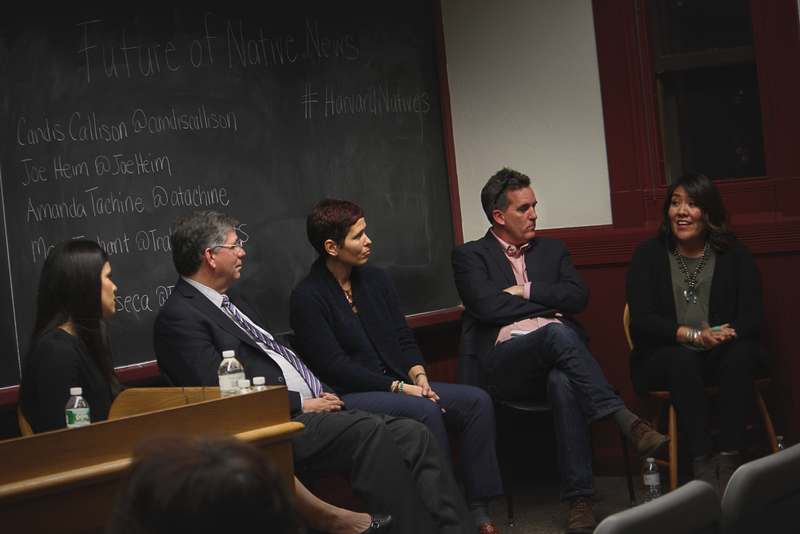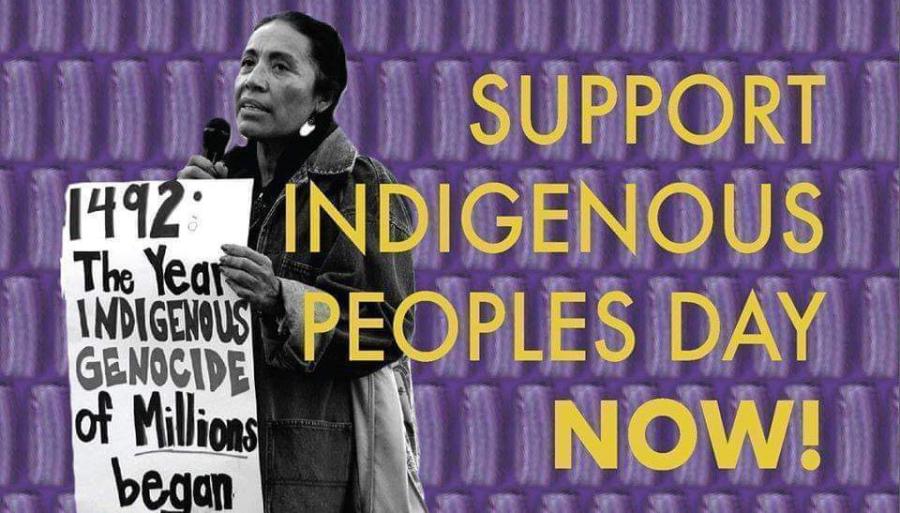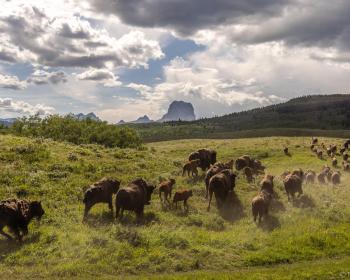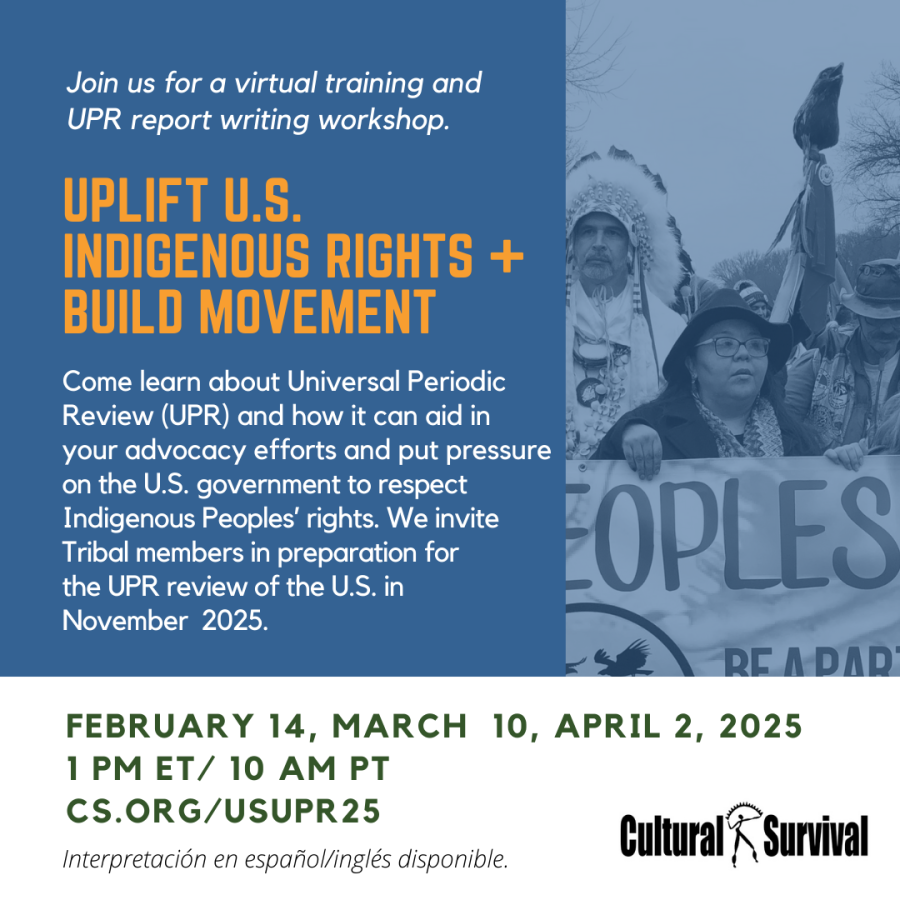
By Hadley DesMeules
On February 23, 2017, the Harvard University Native American Program (HUNAP) hosted a panel discussion entitled “The Future of Native News.” The panel was moderated by current Harvard Neiman Fellow and Associated Press writer Felicia Fonseca, and featured Indigenous journalism scholars Mark Trahant (Shoshone-Bannock), Candis Callison (Tahltan), and Amanda Tachine (Navajo), and Washington Post staff writer, Joe Heim. The panel discussed traditional journalism and the issues Native nations face in receiving mainstream media coverage, as well as the role of social media particularly as it pertains to the coverage of the pipeline protests at Standing Rock.
The panelists spoke to a number of ongoing issues Indigenous Peoples face in mainstream media include stereotyping and the image of downcast and broken Native communities, and the lack of positive stories being told about Indian Country. Most often, mainstream media picks up stories when they reach “crisis mode,” so rather than reporters spending time in Native communities getting to know the people, culture and full context of Native stories as they arise, journalists tend to cover just the moments when the story hits its peak. Without context, it can be, and often is, difficult for non-Native Americans to completely grasp the significance of the story being told without being familiar with Native Nations, issues of sovereignty, borders, etc. Moreover, there are untold Native stories within mainstream stories, such as the impacts of Affordable Care Act and healthcare legislation on Native health care, that non-Native folks might never even think to look for or read about in their daily news.
For mainstream media outlets covering Native issues, the stories they decide to focus on are driven by the interests of their readers, and in many cases Native stories are just not on journalists’ radar or they may not know how their readers might feel about the story. While the best way to cover Indian Country would be to have reporters living in Native communities so they can get to know the area and the people and write stories that aren’t necessarily the “crisis mode” issues, such a schedule does not readily coincide with the way reporters must allocate their time and meet deadlines. Getting more Indigenous journalists in the newsrooms at major media outlets would help expand Native news coverage at the national level and contacting journalists directly to pitch stories is not a bad option in the meantime. Joe Heim of the Washington Post said that for journalists who receive countless story suggestions on Twitter, getting a phone call or a voicemail can be a really great way to encourage a reporter to cover a particular story, and doing some research to find a journalist who covers similar issues and regions in the past is a good start to getting more stories about Native news covered.
The panelists also weighed in on social media and its impact on the Dakota Access (#NODAPL) and Keystone XL pipeline protests. Candis Callison explained that social media has created a new middle ground that has brought the grassroots and mainstream organizations into conversation with one another, while the intersectional population participating in the protests might also have helped to bring more attention to what was happening, whereas similar issues Native peoples have faced received significantly less press.
For more information about the Harvard University Native American Program (HUNAP), the panelists, or to watch the video of the Future of Native News panel, visit hunap.harvard.edu/blog. You can also check out #HarvardNatives on Twitter to learn more about the discussion.
Photo courtesy of HUNAP.



